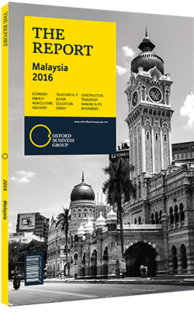Zakri Abdul Hamid, Science Advisor to the Prime Minister; and Joint-Chairman, Malaysian Industry-Government Group for High Technology: Interview

Interview: Zakri Abdul Hamid
How is Malaysia positioning science as a key driver of the country’s economic prosperity?
ZAKRI ABDUL HAMID: Malaysia is currently facing the middle-income trap and, while the economy is doing relatively well, by 2020 we should have ascended to developed status. Key to this goal is increasing investment in research and development (R&D). Japan and South Korea spend more than 3% of their GDP on R&D, while Malaysia currently spends about 1.07%, lagging significantly behind industrialised countries. That said, among Organisation of Islamic Cooperation countries only Malaysia spends over 1% of its GDP on R&D. But we are very conscious that to make progress Malaysia needs to spend more, and so have committed, through the 11th Malaysian Plan, to reach 2% GDP investment by 2020. Additionally, we need to increase the number of researchers, scientists and engineers (RSE) in the country. As of now, the number of RSEs per 10,000 workers is still low, at about 58.2. In contrast to developed countries, the number per 10,000 workforce is more than 80 – Japan registers at 202.8, South Korea comes in at 89.8, Norway is 213.2 and Finland is 217.2. Finally, we also need to place greater emphasis on mastery of science, technology, engineering and mathematics subjects and increase the number of science students. Malaysia first introduced the 60:40 science-arts policy way back in 1967, but the current ratio is 30:70, which must change.
Which reforms need to be made at the tertiary level for Malaysia to realise its R&D potential?
HAMID: In 2006 the government introduced the Higher Education Strategic Plan Beyond 2020, which established five research universities over the next three years and raised government funding for higher education. For more than a decade, public expenditure on higher education has accounted for about one-third of the education budget. Malaysia also spends more on higher education than any of its South-east Asian neighbours, with a budget accounting for 2.2% of GDP in 2011. Between 2008 and 2009, Malaysia’s five research universities received an increase of 71% in government funding. Due to this investment Malaysia’s share in published research papers went up almost four-fold between 2007 and 2011, according to a Thompson Reuters survey. In 2007 there were around 2000 published research papers from Malaysia, but by 2011 this had increased to 7600, or 0.6% of the global total. In 2015 three Malaysian scientists were in the list of the world’s most influential scientific minds. These scientists are distinguished by the number of citations derived from their publication, and they rated in the top 1% of the world’s most influential scientists.
What steps are being taken to position Malaysia within the top 10 of the Global Competitiveness and Innovation Indexes by 2020?
HAMID: We’ve invested quite a bit in science, technology and innovation, but such support is not confined to the Ministry of Science, Technology and Innovation. Much of the R&D is administered by individual ministries, and this has sometimes led to duplication or a lack of coordination.
Due to these challenges, two years ago we initiated the Science 2 Action programme. Guiding the initiative will be the National Science Council, which was launched by the prime minister last January. This umbrella platform will be complemented at the international level by the five-year-old Global Science and Innovation Advisory Council (GSIAC). The GSIAC regularly convenes some of the most accomplished local and world experts in government, industry and academia as a forum to help chart Malaysia’s route to developed-country status.
We also plan to establish the Research Management Agency which will function as a mechanism to ensure the coordination of spending for R&D.
You have reached the limit of premium articles you can view for free.
Choose from the options below to purchase print or digital editions of our Reports. You can also purchase a website subscription giving you unlimited access to all of our Reports online for 12 months.
If you have already purchased this Report or have a website subscription, please login to continue.

